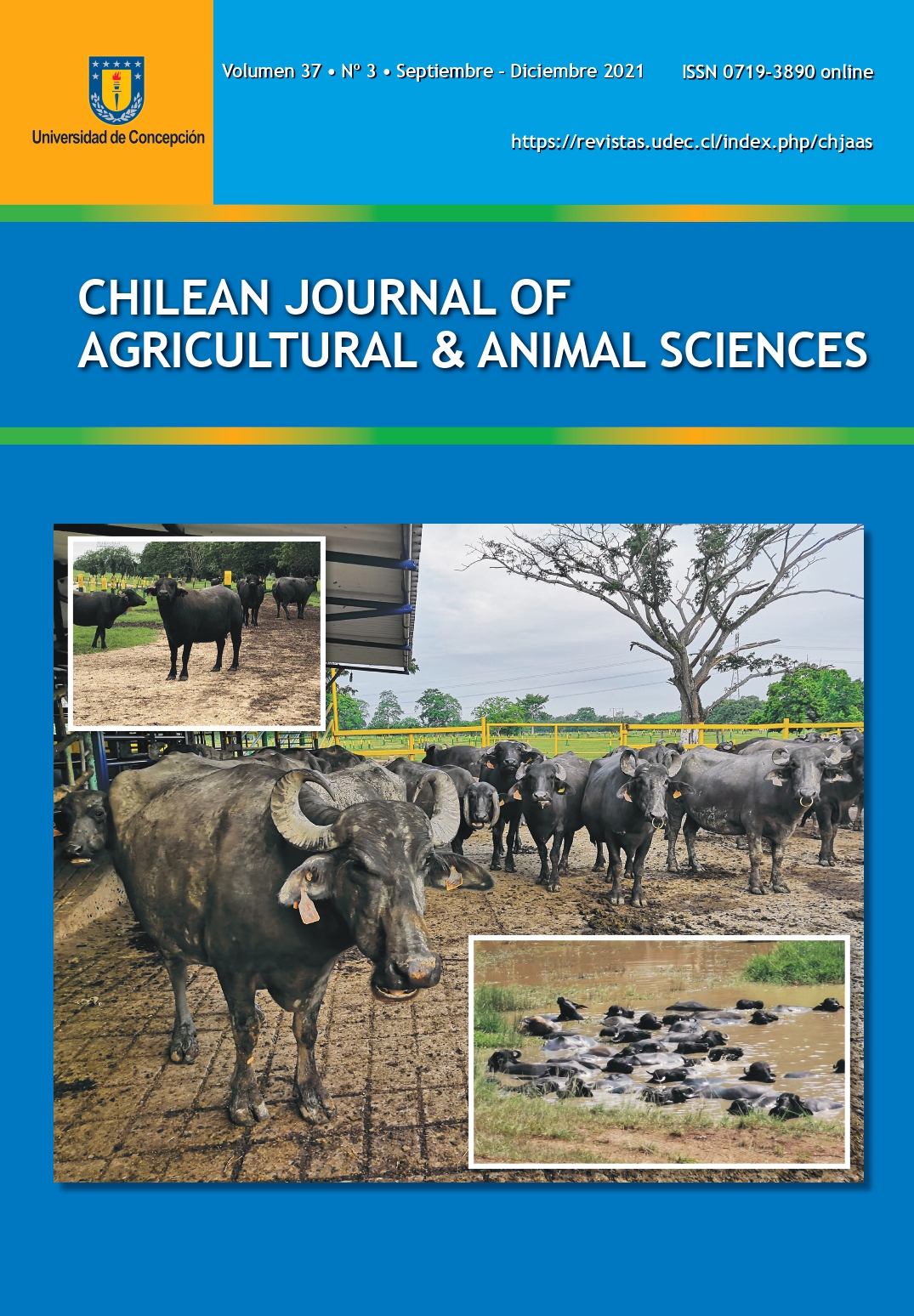ANALYSIS OF THE LACTATION CURVE OF MURRAH BUFFALOES WITH MIXED NON-LINEAR MODELS
DOI:
https://doi.org/10.29393/CHJAAS37-22ALCU60022Keywords:
Bubalinoculture, lactation period, milk production, model selection, tropical cattleAbstract
This study aimed to evaluate the lactation curve of female Murrah buffaloes, using mixed non-linear models (NLM), across three lactation periods (180 d, 210 d, and 240 d). A total of 5334 data on daily milk production (kg) were analyzed. The data were collected every seven days in the interval of one to 250 days of lactation, corresponding to 221 lactations and 145 females, with calvings from 2017 to 2019. The data came from a herd located in the Centro municipality, Tabasco, Mexico. Five NLM were evaluated: Wood (WOD), Wiltmink (WIL), Cobby (COB), Brody (BRO), Sikka (SIK). The best fit model was selected based on the mean prediction error, mean absolute percentage error (MAPE), prediction error variance, coefficient of determination (R2), concordance correlation coefficient (CCC), Akaike (AIC) and Bayesian (BIC) information criteria. A regression analysis was performed between the observed and predicted values. All the NLM had a R2 above 0.91. They tend to underestimate the predictions, without residual autocorrelation. The MAPE showed an average value of 23.5%. The best fit model was WOD, followed by SIK and BRO. For WIL and COB, the mixed model did not improve the fitting. The shortest lactation period showed the best fit, followed by the 210 d and 240 d periods. The relationship between observed:predicted values fluctuated from 0.65 to 1.00, with an average value of 0.94. The use of NLM transcended in the AIC and BIC. The evaluated models showed goodness of fit, with good predictability, but low values in accuracy and precision of prediction.
Downloads
Published
How to Cite
Issue
Section

This work is licensed under a Creative Commons Attribution 4.0 International License.







